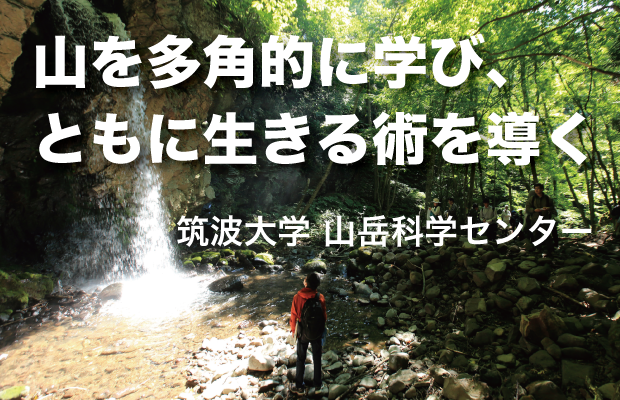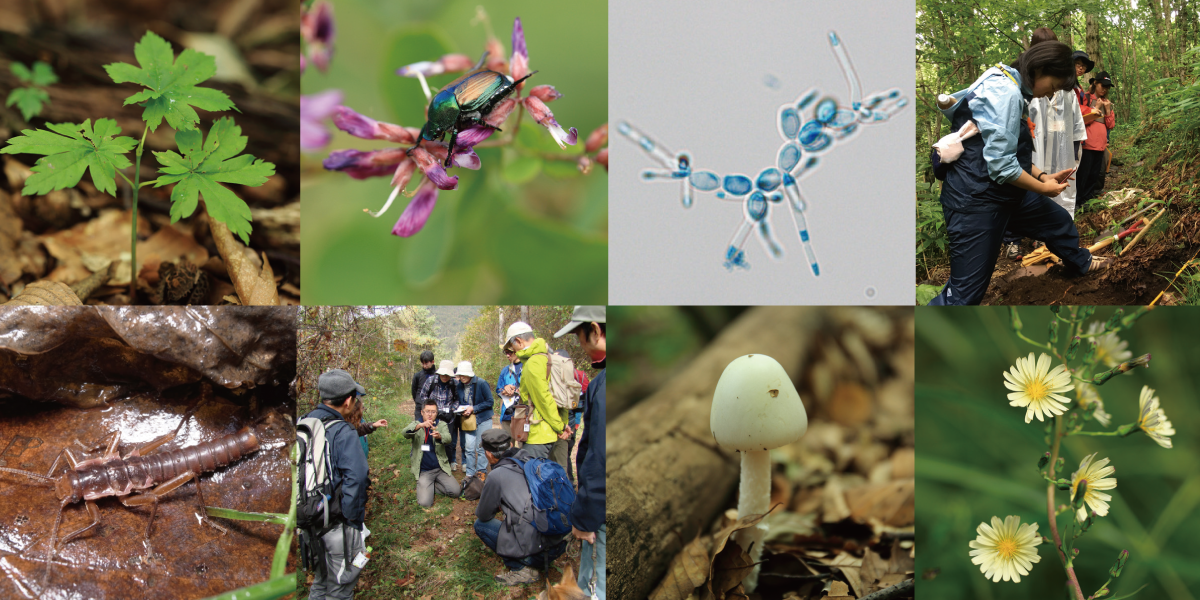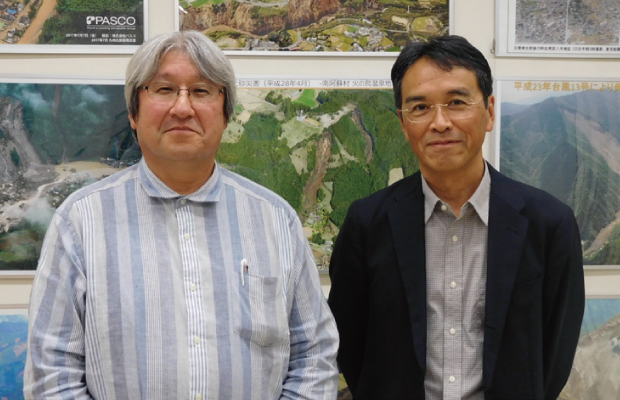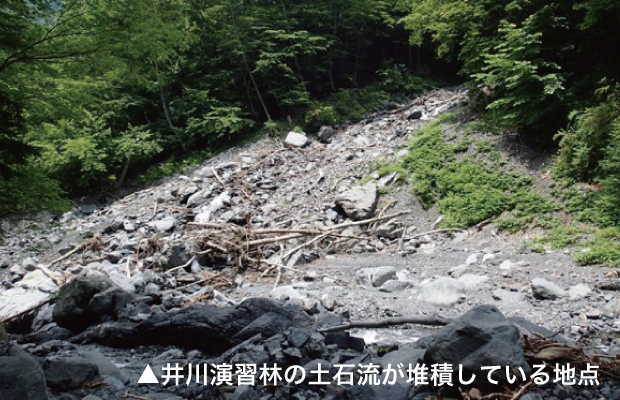- Information for Middle and High School Researchers
Learning about mountains from multiple perspectives and guiding the art of living together
2019.01.09

About 70% of Japan's land area is covered with mountains covered with trees. Not to mention those who live in mountainous areas, even those who live in towns must have set foot in the mountains as children during forestry school and other such activities. That is how familiar mountains are to the Japanese. In fact, much of Japanese society, culture, and traditions are rooted in mountains and forests. Despite this, there has never been a comprehensive study of mountains.
We therefore spoke with Professors Kenichiro Ishida and Yoshihiko Tsumura of the University of Tsukuba's Center for Mountain Science, who were the first in Japan to define the academic discipline of mountain science and establish a master's degree program specializing in mountain science, the Mountain Science Degree Program.

(left) Prof. Kenichiro Ishida and (right) Prof. Yoshihiko Tsumura
Not Just Natural Science, Mountain Research
When you think of research in the mountains, what kinds of things come to mind? It may be easy to imagine research on trees and alpine plants, or studies on the ecology of grouse and other unique animals. However, when we try to understand mountains as a whole, we find that many different fields of study are involved. They include geology and mineralogy, which study the origins of uplifted landforms; forest ecology, which examines the lives of living organisms; silviculture and forest economics, which study how human hands can create sustainable forests; civil engineering, which studies landslides and other disaster countermeasures; and tourism, which considers how mountains can be used as a resource.
In considering how to deal with mountains," says Professor Ishida, "we needed an academic discipline that would comprehensively consider the entire mountain range. The discipline that was created was "mountain science. The University of Tsukuba's mountain science degree program offers students the opportunity to study mountains from a variety of perspectives, utilizing four different fields, each with different characteristics.
A forest where you can learn about diverse aspects of the mountain
The largest of the four fields is the Sugadaira Kogen Experimental Station, located in northern Nagano Prefecture. It has a research facility where many faculty members and students can be stationed, and basic research is actively conducted mainly in the fields of biological science, earth science, and agriculture. The forests are a particular highlight, where various states of plant succession can be observed at the same time. The high elevation of the site also allows for research on organisms that can only be found there. The Daimeishin Dormitory, a tangible cultural property, is also located on the site and is maintained by volunteers. They serve as guides and hold nature observation events using part of the experimental station.
The Igawa Experiment Forest in Shizuoka Prefecture, on the other hand, is a little different. Compared to other forests, this mountain is by far the most prone to landslides and is a highly hazardous field. Because of this characteristic, the forest is used as a place for learning about disasters and for empirical research on disaster prevention. It is precisely because of forests like this that disaster prevention technology is being developed and many lives are being saved.
Other examples are the Tsukuba Experimental Forest (commonly known as the Botanical Garden) on the Tsukuba campus, which is used for basic education for undergraduate students and as a research site for faculty members, and the Yatsugatake Experiment Forest, which is deeply involved in regional exchange and interaction with other facilities such as the National Astronomical Observatory of Japan Nobeyama and Shinshu University Nobeyama Station. Although they are all part of the same "Experimental Forest," each has its own rich individuality. And these personalities are the fields that are indispensable for learning about various aspects of mountains.

Nurture human resources to take on challenges through comprehensive learning
Currently, Japan's mountain forests are facing a variety of problems, such as reduced biodiversity, landslide disasters caused by heavy rainfall, the decline of the forestry industry, and an increase in vermin population. Moreover, they are intricately intertwined and require a wide range of knowledge to solve them.
Professor Tsumura says, "In order to think about how to deal with mountains, it is necessary to know them from multiple perspectives. The Mountain Science Degree Program has faculty members involved in forest ecology, erosion control, tourism geography, architecture, and mountain religion. While the graduate students in the program have a research theme in one field, they learn about mountains comprehensively through classes and practical training in these diverse areas.
The act of research is to deepen one's expertise in a certain field or area, to ask new questions, and to find answers. In addition to this, by gaining a broad perspective in the mountain environment, one can discover new perspectives that cannot be obtained by simply pursuing a single field of study. This is how we can create human resources who can solve various problems in the mountainous regions.
Photo courtesy of : University of Tsukuba Mountain Science Center (in part, photographer Makito Yokotsuka)
